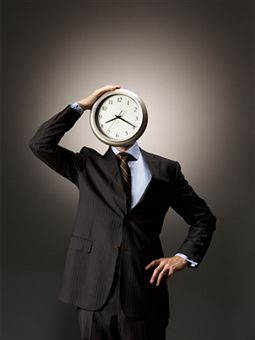Definition of Migraine Headaches
A migraine headache is a common type of headache about 30 million Americans suffer from. A migraine is caused by the inflammation of the arteries surrounding the brain. The more swelling and inflammation there is in the arteries, the more severe the pain is of the migraine.

Alternative Names of Migraines – Misdiagnosis of Migraines
Headaches are often confused with migraines. These are a few of the most common types:
- Episodic Tension Headaches: Normally occur less than two weeks out of a month. The pain is generally moderate and affects the top of the head. The difference between a “regular” migraine and a episodic tension headache is tension headache occur in episodes (hence the name). The episodes can last from 30 minutes to multiple days.
- Chronic Tension Headaches: Normally last more than two weeks out of a month. The pain appears to last throughout an entire day. The intensity of the headache may vary, but the pain is constantly there. The pain may start in one area and spend across the surface of the head. This type of headache usually needs prescription medicine, because it lasts for a long period of time.
- Cluster Migraines/Headaches: There are medical professionals who do not believe cluster headaches are migraines due to the short amount of time the headaches last. However, cluster headaches can be present 3-5 times a day. If you suffer from cluster headaches, you could experience a headache 50 percent of the day but at various times. You will feel fine for awhile and suddenly get a headache at other times. These are common symptoms of cluster headache. Since cluster headaches happen so often, we will place them under the migraine and headache categories.
- Sinus Headaches: Another type of headache not categorized under migraines. is sinus headaches. Sinus headaches are not as painful as migraines, but allergies are a trigger of migraine headaches. You can start with a small sinus headache that turns into a migraine. This is very common. A sinus headache affects the facial areas more than the temples of the head. Pain in the cheekbones, nose, and throat are common with sinus headaches.
Symptoms of Migraines
Different people report different symptoms of their migraines. The most common symptoms are: auras (visual disturbances), intense throbbing of a temple, sensitivity to light and sound, fatigue, loss of appetite, and vomiting. Auras are usually beginning signs of an oncoming headache.
However, some patients report no signs of migraines until the migraine is in full blast. The symptoms of migraines can last up to 72 hours after the initial onset of the headache. If a migraine lasts longer than 72 hours, contact your family physician as migraines are often confused with more severe illnesses, such as brain tumors.
Causes of Migraines
The exact cause of migraines remains unknown. However, there is valuable information about migraines that has been proven by medical professions. Here are some known triggers of migraines:
Migraines? Get Remedies Fast!
- Fluctuating hormone levels in pregnancy can cause migraines even if the mother does not have a history of
headaches - Stress is a key cause of migraines
- Long or strenuous periods of exercise
- Reflections from lights
- Allergies
- Environmental changes – extreme heat, latitude changes, etc
- Malnutrition
- Drinking of alcohol or cigarette smoking
Some physicians believe certain foods can trigger migraines as well. Foods with high sugar content or high acidity are believed to be the main food triggers. These food may include chocolate, red wine, and citrus fruits.
Diagnosing Migraines
Almost fifty percent of migraine sufferers are not clinically diagnosed. If you feel you have the symptoms of migraines, a simple visit to your doctor can confirm your suspicions. The doctor will ask for an explanation of your symptoms and family history. An Magnetic Resonance Imaging (MRI) scan may be requested to assure you do not have a brain tumor or brain cancer.
Pharmaceutical Treatments for Migraines
Beta blockers are given to reduce the number of migraine attacks. Propanolol is the most common beta blocker. This type of medicine is taken on a daily basis and may be combined with other medicines if needed. For extreme cases, seizure medications may be prescribed. If your doctor believes you have unusual brain activity, he or she may experiment with seizure medicine.
An anti-nausea medicine prescription is regularly written out for patients who vomit due to migraines. Other medications are not effective if the patient can not keep the pill(s) down.
Over-The-Counter Medicines for Migraines
Over-the-counter medications are often recommended by a physician instead of giving a pharmaceutical medication. Acetaminophen and Aspirin are two common ingredients used in over-the-counter drugs to help treat the symptoms of migraines. Acetaminophen is also known as Tylenol, and it is used as a pain and fever reducer.
There are risks of taking Acetaminophen and/or Aspirin though. Studies have shown Acetaminophen to cause liver and sometimes kidney disease. It should not be mixed with alcohol or illegal substances. The effects of alcohol and illegal substances can be intensified if paired with Acetaminophen. Aspirin is dangerous to children under 18 years of age. Aspirin can cause a life threatening neurological disorder in children. Aspirin and Acetaminophen should not be taken if you are pregnant.
Home Remedies For Migraine Headaches
There are many home remedies for migraine headaches. Each person is different, so some of the home remedies may work for you, and some of them may not.

Sufferers report sleep as the best thing you can do for a migraine. On the other hand, there will be times when your head hurts too much to sleep. In those cases, lay in a dark room with a cool compress on your forehead.
Another home remedy is drinking a cup of soda, coffee, or hot tea. Migraine headaches are believed to lower blood sugar levels. So, a glass of soda or coffee will help raise your blood sugar level. There is a small amount of caffeine in over-the-counter pain relievers.
Taking a warm bath may be used as a relaxation technique. This is a good option for someone that cannot sleep due to the intensity of the migraine. Yoga and meditation have similar relaxation outcomes as taking a hot bath.
Herbal Remedies For Migraine Headaches
PassionFlower is an herbal remedy some people use to treat headaches. PassionFlower contains elements that relax the nervous system. The nervous system is an area of the body affected by migraine headaches. PassionFlower has been used to treat neurological disorders, nervous systems disorders, muscle spasms, body aches or pains, anxiety disorders, and Parkinson’s Disease.
FeverFew is probably the most popular herbal remedy for migraine headaches. Feverfew increases circulation of blood throughout the body, relieving tension left behind from a headache. Feverfew has also been used for missed menstrual cycles, stress on muscles caused by tension, and arthritis.
Another herbal remedy is an ancient Chinese practice. Acupuncture is a procedure where small needles are inserted into the skin at certain pressure points. The Chinese culture believe migraines are caused by an interruption of the body’s natural energy flow. Acupuncture is used to get the natural flow of the energy back to normal. There is a connection of mental, physical, and emotional states in the Chinese belief of “one mind connected with one body”.
Prevention of Migraine Headaches
The easiest way to prevent migraines is to be able to identify the triggers of your headaches. This will take some time to learn, but it is worth learning the triggers of migraines. Everybody’s triggers are different, so you should keep a journal of when you get a migraine. Keep track of the time your migraine started and the time it ended. It is also a good idea to jot down anything that you think could have triggered the headache. The triggers could include a food you ate, a loud noise that would not stop, or an exercise routine you tried.
Stopping the migraine before it even starts is key to preventing migraines. If you have medicine prescribed by a doctor, take the medicine when your first sign of a migraine appears. Do not wait! Even though not as effective, do the same with over-the-counter medicine if you do not have prescribed pills.
Another way to prevent migraines is to get plenty of sleep. Doctors recommend people with migraine history to get 8 to 9 hours of sleep every night. Depravation of sleep is a popular trigger for headaches. You may feel a headache coming on in the evening. When this happens, go to bed early to get plenty of rest before the headache turns into a migraine.
When To Seek Medical Attention
Medical attention is not normally needed for regular migraine headaches. There are unusual symptoms of migraines that need immediate medical attention if the symptoms appear.
Seek immediate attention if:
- Your migraines lasts longer than 48 hours
- You experience numbness or tingling of you arms, legs, fingers, or toes
- Your migraine is worse than your normal migraines. Think of it as, “The worse migraine I have ever had!”
- Vomiting or nausea lasts after the migraine has subsided
- Symptoms associated with strokes. Such as: confusion, seizures, inability to talk, inability to move or walk, dizziness, etc
- Shortness of breath
Contact your physician if you have any of these symptoms. They do not require immediate attention, but are not necessarily common symptoms.
- Increased amount of headaches
- Changes in the symptoms of your headaches. You are the only person that can notice a change in your symptoms. Keep a record of changing symptoms and notify your doctor.
- You are awaken by a headache
- You have to increase your medicine to manage your migraines
- You have loss of appetite or sleep for an extended period of time after your headache is gone
- You experience depression or anxiety when you get a migraine
- You run a fever with the headache. A fever is a common side effect of migraines, but it should not be a high temperature.
In Conclusion
Suffering from migraines is a popular disorder. The easiest way to deal with a migraine is to learn the trigger of the headache. Try to stop a migraine trigger before it starts. Talk to a doctor if your condition changes, or your migraines becomes too much to handle. Migraine headaches should not effect your everyday activities.
The symptoms of migraines vary from person to person. You may not experience all of the symptoms listed in this article. If you do not experience all of the symptoms, it does not mean you do not suffer from migraine headaches. This article is intended to be used as a reference tool. To get a definite answer about your migraines, contact your family doctor.

No Comments